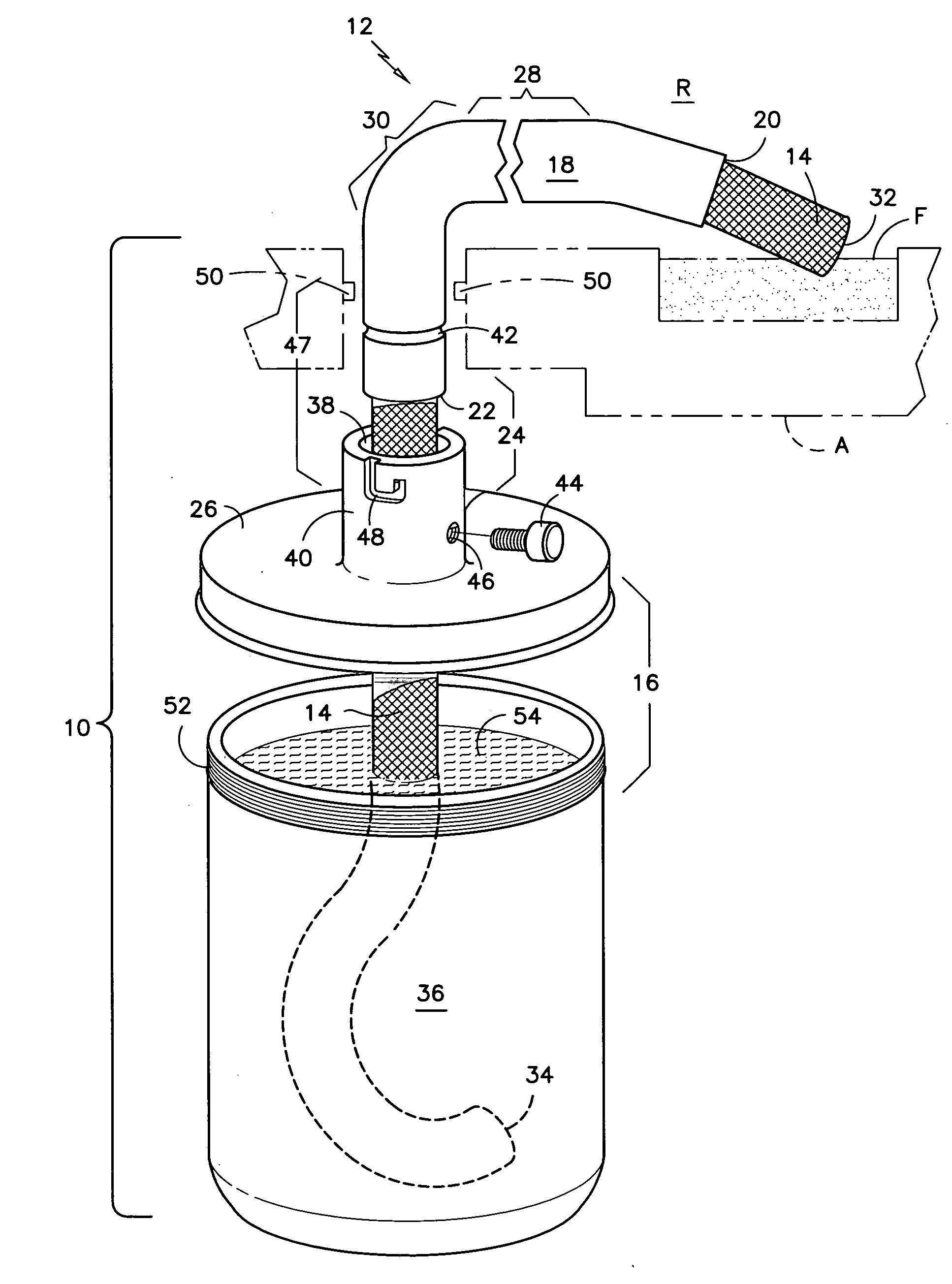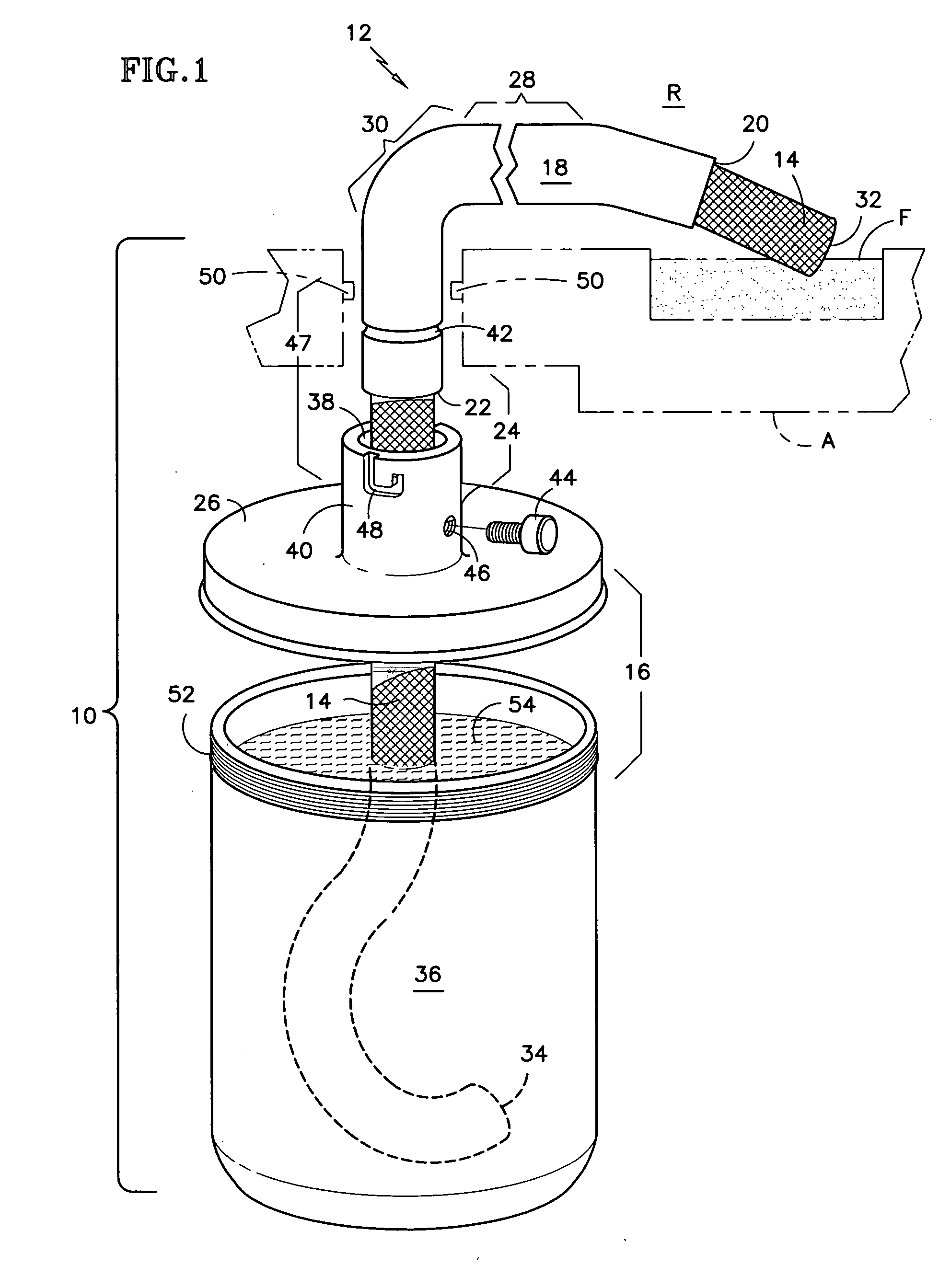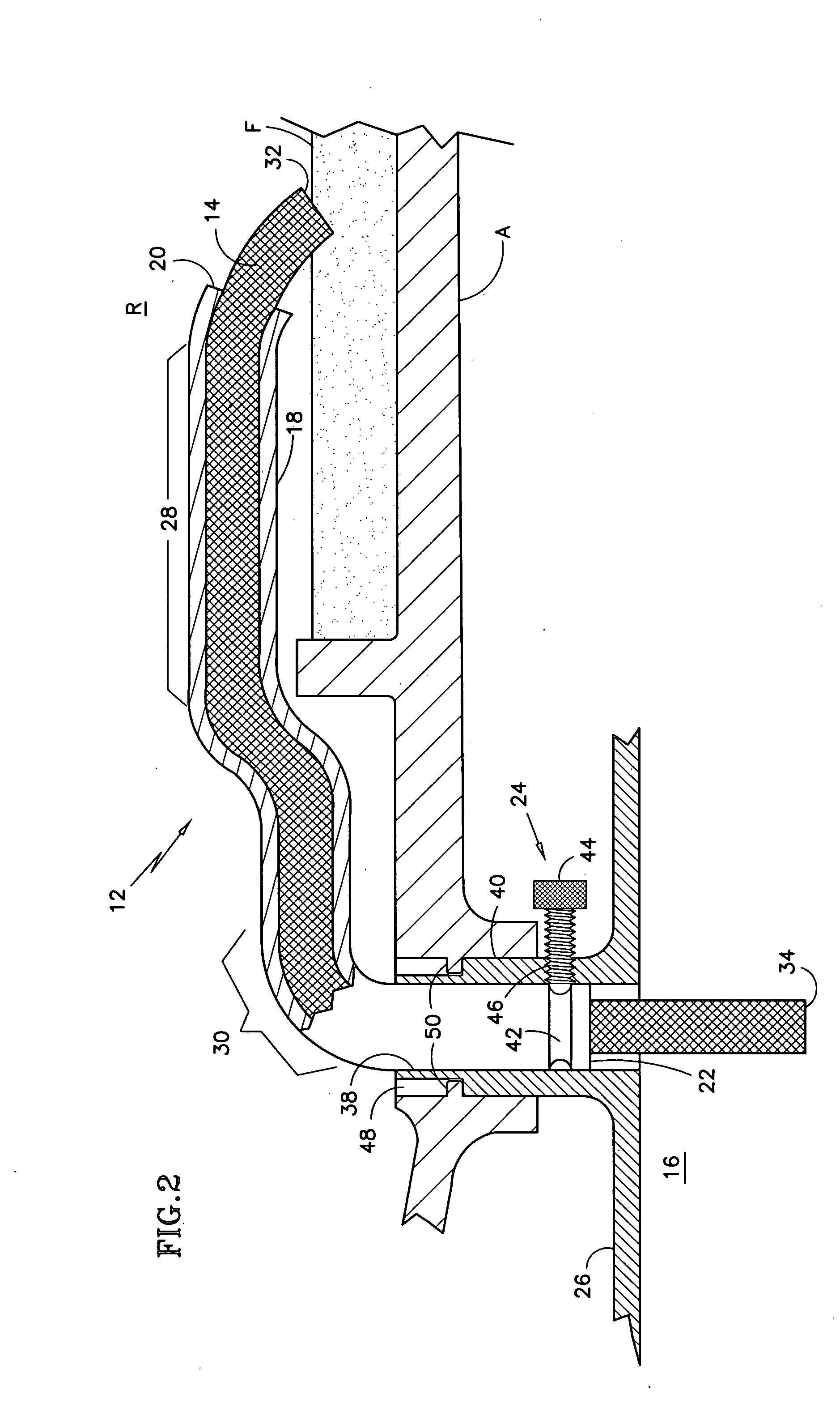Apparatus and methods for removing a fluid from an article
a technology of apparatus and fluid, applied in the direction of cleaning process and apparatus, chemistry apparatus and processes, thin material processing, etc., can solve the problems of engine disassembly and repair, engine damage, and oxidation damage of brand new or newly refurbished components, so as to achieve low apparatus cost and minimal skilled labor
- Summary
- Abstract
- Description
- Claims
- Application Information
AI Technical Summary
Benefits of technology
Problems solved by technology
Method used
Image
Examples
Embodiment Construction
[0021]Referring first to FIG. 1, a fluid removal apparatus 10 broadly comprises a guide tube 12, a wick 14 and a collection vessel 16. The guide tube 12 directs the wick 14 to a fluid F, located in an article A, for transfer to the collection vessel 16. Once removed, the fluid can be disposed of in an environmentally conscious manner. The wick 14 draws the fluid F pool out of the article A by capillary action. Capillary action occurs when the adhesive intermolecular forces between the fluid F and the porous wick 14 are stronger than the cohesive intermolecular forces within the fluid F itself.
[0022]The guide tube 12 is a hollow, thin-walled body, having an internal passageway that is nonporous, unobstructed and as smooth as possible. The guide tube 12 directs the wick 14 around obstructions in the article A to the fluid F. Preferably, the passageway has a cross sectional shape that matches the wick's 14 cross sectional shape, but they may also be shaped differently. Although a circu...
PUM
| Property | Measurement | Unit |
|---|---|---|
| flexible | aaaaa | aaaaa |
| corrosion | aaaaa | aaaaa |
| rotational speed | aaaaa | aaaaa |
Abstract
Description
Claims
Application Information
 Login to View More
Login to View More - R&D
- Intellectual Property
- Life Sciences
- Materials
- Tech Scout
- Unparalleled Data Quality
- Higher Quality Content
- 60% Fewer Hallucinations
Browse by: Latest US Patents, China's latest patents, Technical Efficacy Thesaurus, Application Domain, Technology Topic, Popular Technical Reports.
© 2025 PatSnap. All rights reserved.Legal|Privacy policy|Modern Slavery Act Transparency Statement|Sitemap|About US| Contact US: help@patsnap.com



